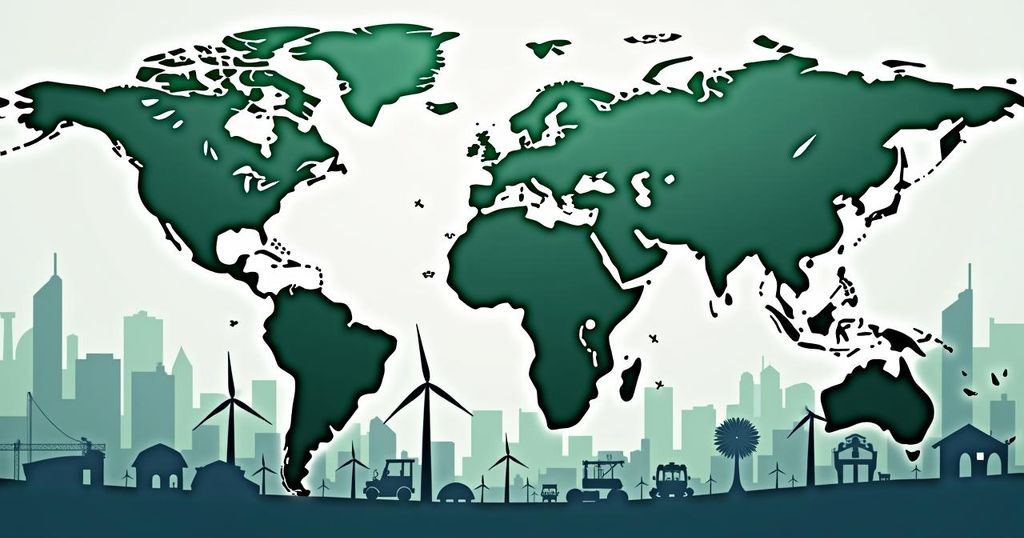China’s Strategic $100 Billion Investment in Cleantech Amid Rising Trade Barriers

Since January 2023, Chinese firms have invested over $100 billion in overseas clean technology projects to circumvent trade barriers imposed by the U.S., Canada, and the EU. This investment is partly aimed at sustaining China’s dominance in electric vehicles, lithium batteries, and solar panels, which collectively overtake a significant portion of the global market. Companies like BYD and CATL are responding strategically by establishing manufacturing plants abroad to mitigate tariff impacts, reflecting a pragmatic approach amidst rising trade tensions and competitive pressures.
Since the commencement of 2023, Chinese companies have invested an impressive sum of over $100 billion in clean technology projects abroad, as reported by Climate Energy Finance (CEF), an Australian research group. This substantial investment surge is a strategic response to trade barriers, specifically high tariffs imposed by the United States, Canada, and the European Union. The investments are part of a broader effort by Chinese firms to maintain their dominance in the global clean technology sector, which includes electric vehicles, lithium batteries, and solar panels. As of now, China holds a commanding share in these markets, controlling 32.5% of global electric vehicle exports, 24.1% of lithium batteries, and an extraordinary 78.1% of solar panel production. The significant tariffs imposed on Chinese goods have prompted these companies to seek new manufacturing locations to bypass such obstacles. Notably, the U.S. and Canada have introduced tariffs exceeding 100% on Chinese electric vehicles, and tariffs of 50% and 25% on solar panels and lithium batteries respectively. In light of these challenges, leading firms like BYD and CATL are proactively establishing factories in other countries to mitigate the impact of these trade restrictions. For instance, BYD is investing $1 billion in a manufacturing plant in Turkey in anticipation of a potential 40% tariff from the EU, while CATL is expanding its reach with new operations in Germany, Hungary, and other locales. Furthermore, projections indicate that by 2030, a substantial two-thirds of China’s cleantech production capacity is expected to surpass domestic demand, compelling the nation to seek additional export markets. Estimates suggest that overall solar production capacity within China could reach 860 gigawatts by that time. Chinese authorities have not remained silent regarding the implications of these tariffs. Senior Chinese climate envoy Liu Zhenmin warned that the decoupling from Chinese manufacturing could escalate the global energy transition costs by as much as 20%. The ongoing trade tensions thus illuminate the intricate balance between global climate aspirations and the competitive nature of the market, as China persistently amplifies its role in the clean technology domain.
The investment strategies employed by Chinese companies reflect a reactionary measure to increasing trade barriers in key markets such as the United States, Canada, and the European Union. As trade tensions surface, especially concerning technology sectors, businesses seek alternatives to safeguard revenues and sustain market shares. China’s robust presence in clean technology sectors positions it uniquely in the global economy; however, the escalating tariffs and competitive pressures necessitate a recalibration of strategies to sustain growth levels while maintaining access to critical markets. As global climate initiatives converge with economic interests, the challenge of balancing these two dynamics remains crucial for international stakeholders.
In conclusion, the surge of over $100 billion in investments by Chinese firms into overseas cleantech projects since the beginning of 2023 encapsulates a strategic initiative to evade mounting trade barriers posed by Western nations. This move not only signifies China’s ambition to sustain its global manufacturing supremacy but also underscores the pressing need for adaptability in the wake of competitive pressures and regulatory challenges. As the global landscape evolves, the interplay between market dynamics and climate commitments will undoubtedly shape the future trajectory of both Chinese firms and the broader cleantech industry.
Original Source: esgnews.com








